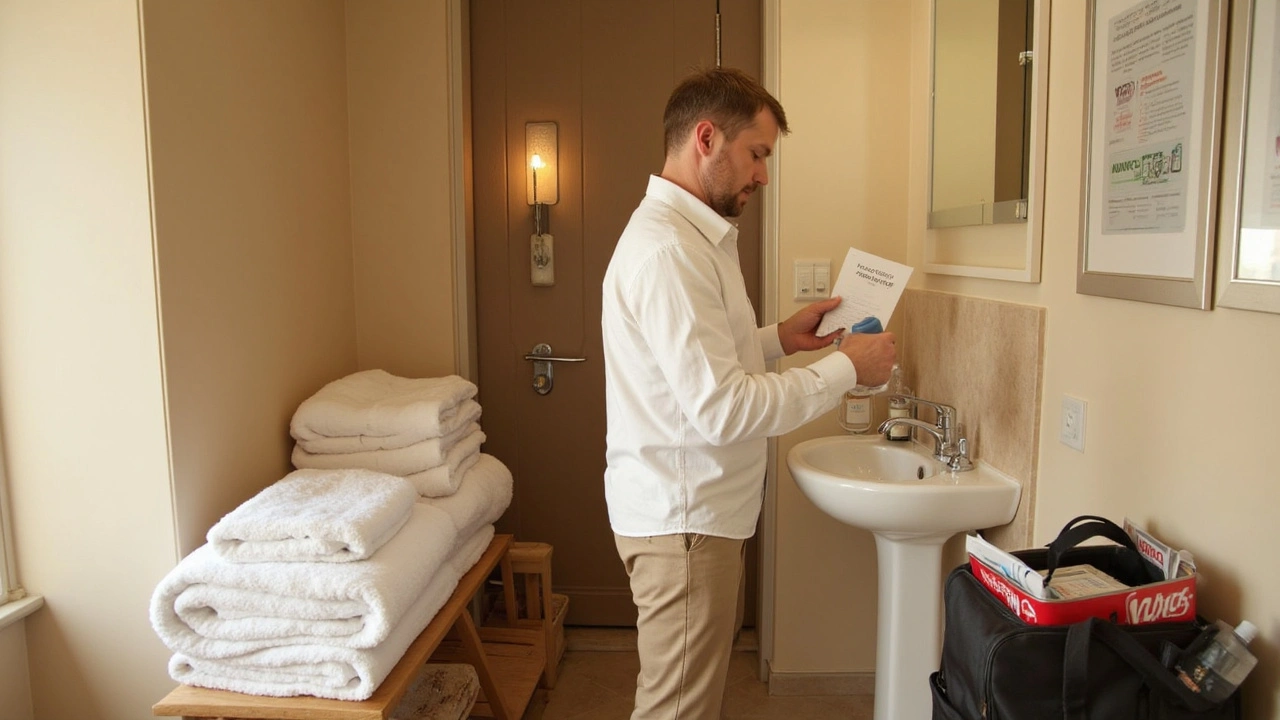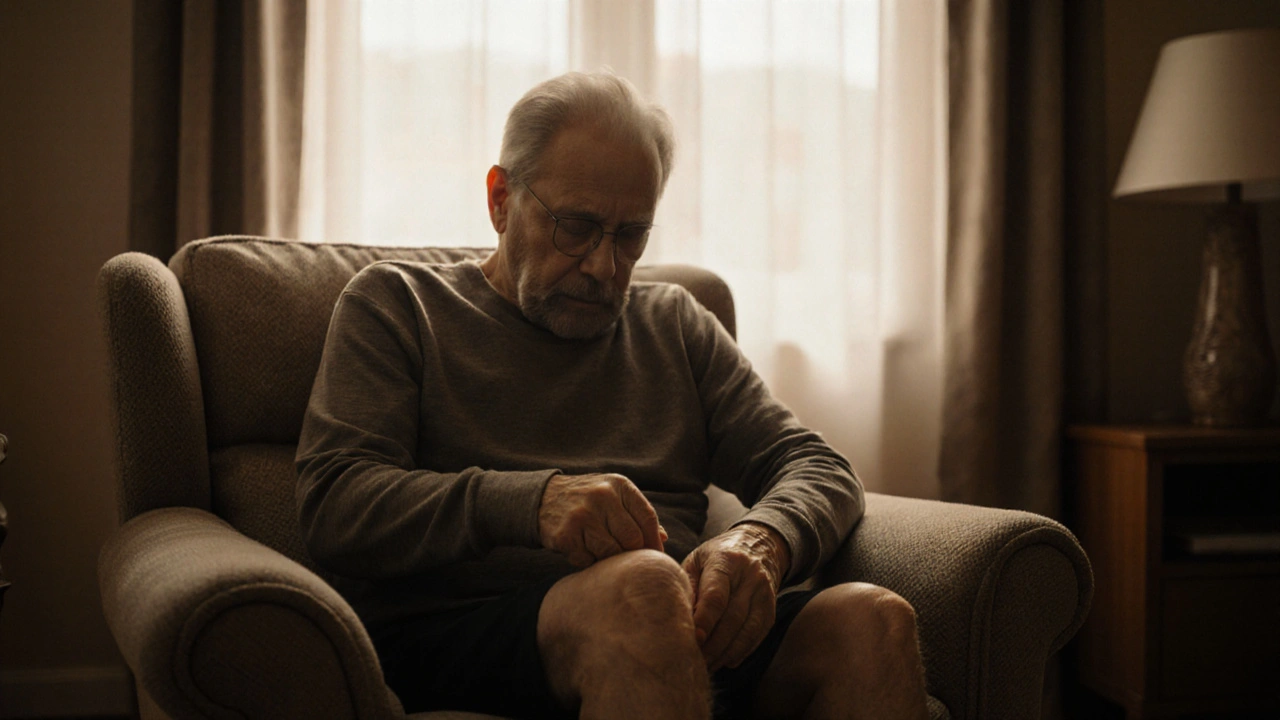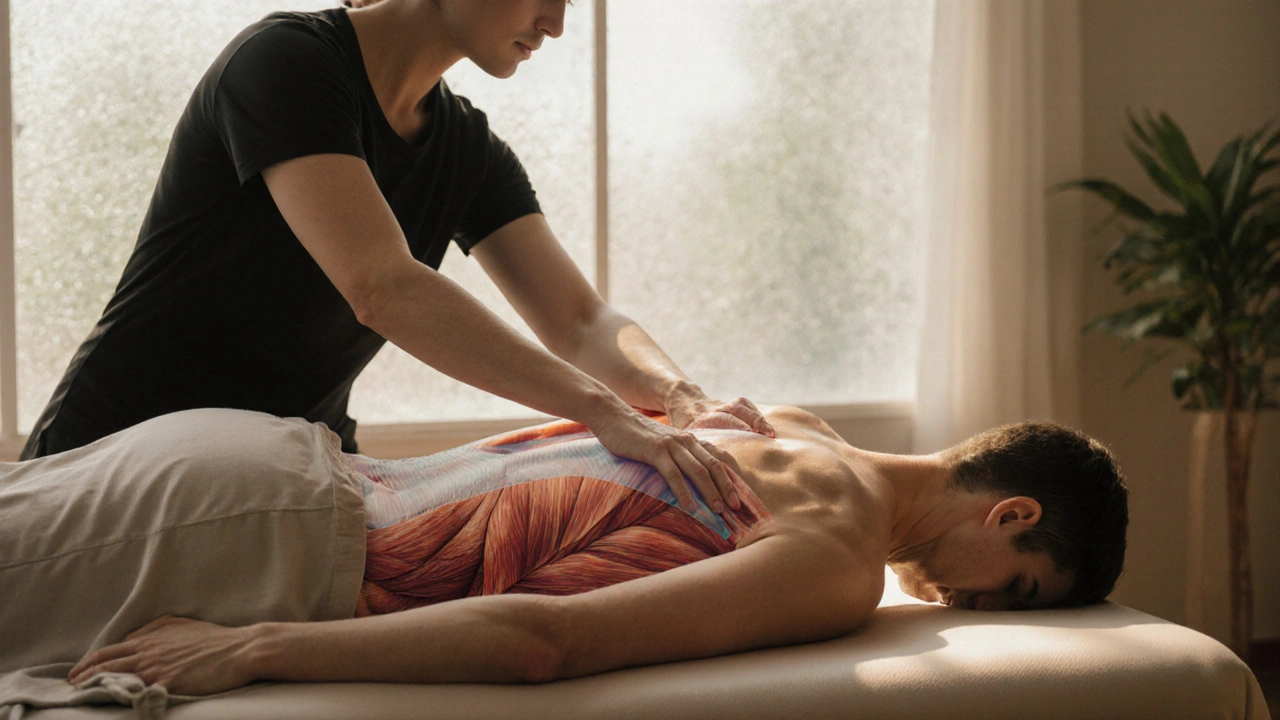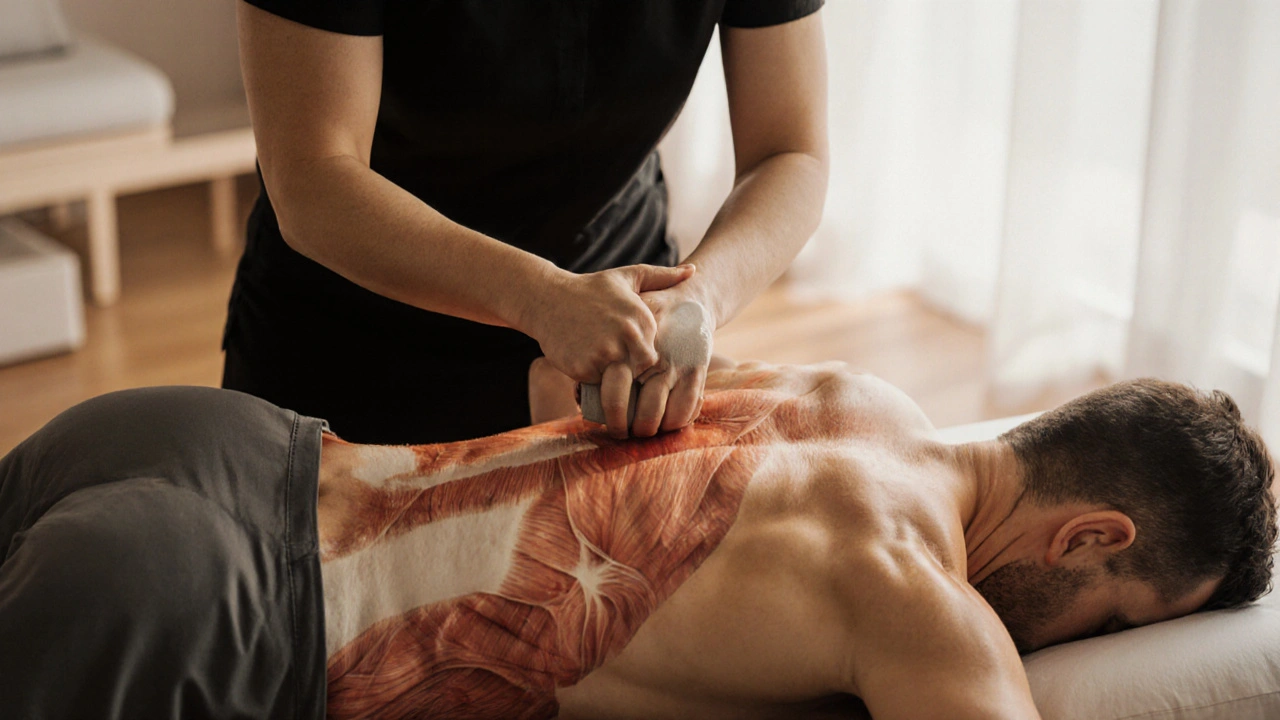Deep Tissue Massage Preparation Guide: Maximizing Your First Session

Ever been told a deep tissue massage is both a treat and a test of your pain threshold? It’s not far from the truth. People come in with knots that feel like they're made of cement and leave with loose muscles—sometimes a little dazed, but grateful. What’s wild is how unprepared most folks are for that first session. I remember walking into my first deep tissue massage thinking it would feel like a spa day. Surprise—it was intense. I also learned firsthand that what you do before that massage can honestly make or break how much you get out of it. If you want to dodge rookie mistakes like showing up dehydrated or tensing up every time the pressure increases, stick around. There’s a real art to preparing, and you don’t want to wing it.
Understanding Deep Tissue Massage: The Facts and What to Expect
Deep tissue massage isn’t like your average rubdown. The therapist presses beyond the surface to reach deeper muscle layers and connective tissues. Imagine they’re working on knots and tightness you didn’t even know were there. You’re not just paying for comfort; you’re getting a real therapeutic intervention.
This technique got famous in the late 1800s, but it wasn’t until the 1940s that doctors really started to recognize its benefits for recovery and chronic pain. According to the American Massage Therapy Association, about 25% of people who get massages every year pick deep tissue for pain relief or specific problems. The strokes feel slower and more concentrated than a Swedish massage—the therapist might linger on a single spot for several seconds to break up stubborn adhesions or scar tissue.
{Ever get sore after a workout and realize, days later, you’re still limping? That’s your muscle screaming for help. Deep tissue massage helps undo that tightness. It’s especially helpful for chronic pain, known sports injuries, and even posture problems from desk jobs—like when you’re hunched over your laptop for hours, and your back feels like one solid plank.}
Most people notice the benefits—like increased mobility, less pain, better circulation—after just one session, but therapists say real change often takes several appointments. And, here’s a piece of trivia: a 2014 study in the Journal of Alternative and Complementary Medicine found that deep tissue massage can drop systolic blood pressure by almost 6 mm Hg just fifteen minutes after a session. That sudden calm, heavy-limbed feeling? It’s real.
Here’s where expectations can trip up newbies. Deep tissue massage is not supposed to be agony—when it hurts, deep tissue massage actually causes your body to tense up, making it harder for the therapist to reach your knots. There's a sweet spot right below "ouch," and a good therapist will know when to ease up. Always speak up if it hurts—a quality therapist will adjust pressure every time.
| Type | Used For | Pressure | Duration |
|---|---|---|---|
| Swedish | Relaxation, light tension | Mild | 45-60 minutes |
| Deep Tissue | Chronic pain, knots, injuries | Moderate to firm | 60-90 minutes |
| Sports | Injury prevention, recovery | Variable | 30-90 minutes |
One thing that keeps surprising people: sometimes, you feel a little tender afterward. That’s a good thing, not a sign the therapist went too hard. The soreness fades within a day or two if you take care after the massage. It's a bit like DOMS (Delayed Onset Muscle Soreness) after a leg day at the gym—uncomfortable, but a sign your muscles are healing.

Prepping Your Body and Mind: The Smart Way to Get Ready
There’s this cliché that says the best way to prepare is just "show up and relax." Not true. What you do hours (even days) before your massage matters way more than you’d think. A few small changes make a big difference in how much you benefit and how you feel afterward.
First up? Hydration is king. Muscles are like sponges—well-hydrated ones are soft and pliable. When you’re dehydrated, muscle fibers stick together like old rubber bands, making it way harder for the therapist to work. I like to start drinking more water the day before and keep a bottle handy right up until appointment time. Pro tip: lay off heavy sodas or alcohol, which dehydrate you.
Eating is another detail most people get wrong. Arriving stuffed is uncomfortable when you’re face-down on a massage table, but arriving hungry is a recipe for dizziness. I eat a light snack—maybe a banana or a small bowl of oatmeal—about an hour before. No heavy, fried food. If you get hangry, a granola bar will save you.
Dress in loose, comfy clothes. You’re going to undress for the massage, but trust me, squeezing into skinny jeans when you’re relaxed and floppy post-massage is a nightmare. Bring slip-on shoes if possible. Teensy detail, but it helps.
If you’re taking meds or have any health conditions, tell your therapist at the start, even if it feels awkward. They want to keep you safe. Certain conditions—like recent surgeries, skin infections, or blood clots—might make deep tissue massage risky. If something feels off, like a fever or chills, it’s better to reschedule.
Showering before a massage isn’t just polite, it helps you feel refreshed. Warm water can relax your muscles and get blood flowing, which means the therapist can get to the deep stuff faster. Skip heavy perfumes or lotions—they can interfere with the massage oils.
Here’s a step lots of people forget: mind prep. If you’re running late or stressed about getting back to work, you’ll stay tense on the table. I give myself an extra buffer—arriving ten minutes early, silencing my phone, and just sitting in the waiting area, breathing. My friend swears by listening to lo-fi music or a meditation podcast pre-massage.
- Hydrate the day before and the day of your appointment.
- Eat a light snack 1-2 hours before your session.
- Avoid caffeine and alcohol right before your appointment.
- Dress in loose, comfortable clothing.
- Shower ahead of time and skip heavy scents.
- Inform your therapist about injuries or health conditions.
- Arrive early so you can mentally wind down.
One thing I always do: use the bathroom right before the massage starts. There’s nothing worse than being stuck halfway through a back massage, realizing you have to pee and counting down the minutes.
If you’re worried about pain, ask about pressure preferences or safe words. Some therapists use a ten-point scale (1 is featherlight, 10 is unbearable) and will check in regularly. Communication matters way more than most people realize. You’re not being picky; you’re helping your therapist help you.
Also—it’s normal to feel a little nervous the first time, especially if you’re not used to undressing or being touched. Don’t stress. These therapists are pros; they’ve seen everything. If you’d rather keep your underwear on, just say so. Most spas provide plenty of draping for privacy.

What to Do After Your Deep Tissue Massage: Recovery Done Right
The massage doesn’t end when you step off the table. What you do after is just as important for your muscles. I learned the hard way—my first time, I went straight to the gym. Not smart; my legs were jelly and I was sore for days. There’s a real method to the recovery phase.
Step one: drink lots of water. Deep tissue moves lymph and unlocks toxins built up in the muscle. Drinking water helps flush all that out faster, reducing that post-massage soreness. Aim for at least two liters that day (about half a gallon). Even mild dehydration can make soreness worse and undo some of the massage’s benefits.
Don’t jump right back into intense workouts. Your muscles need a breather, even if you feel great. Give it at least 24 hours before lifting weights or running sprints—just walking, stretching, or some gentle yoga is ideal. Emilia is notorious for skipping this advice and then hobbling around for two days complaining. Trust me—rest pays off.
If you feel sore, a warm bath is magic. Epsom salts help relax muscles even more. Just twenty minutes soaking and your body will feel looser. I keep Epsom salts handy at home for exactly this reason.
Pay attention to what your body tells you after your session. If you’re tired, nap. If you feel super hungry, eat. Deep tissue ups your metabolism—that’s why some people feel a spike in energy, while others crash hard.
You might spot some bruising or tenderness the day after, especially if you had really stubborn knots. That’s normal, too. If the soreness gets worse every day or you feel nerve pain (sharp, electric, or tingling sensations), let your therapist and doctor know ASAP.
Journaling can help track how you feel and what worked, so you can communicate better with the therapist next time. Write down which areas felt the best release or which parts hurt, so your sessions get more tailored every visit. If you’re like me and forget everything, just use your phone’s notes app.
- Drink lots of water (at least 2 liters) after the massage.
- Avoid strenuous activity for 24-48 hours.
- Soothe sore spots with a warm bath and Epsom salts.
- Light stretching can help maintain flexibility.
- Listen to your body and rest as needed.
- Track soreness or discomfort to improve your next experience.
One quirky tip—schedule your first deep tissue massage at a time when you can take it easy for the rest of the day. A late afternoon or evening slot works well so you can unwind at home with snacks, TV, or music after. It helps lock in the relaxation, instead of jumping straight into chores or meetings.
Bringing a water bottle, loose change for tips, and a plan to chill at home after is the magic trio for your best first-time experience. When Cassian sees me come home all floppy and mellow, he knows it’s "quiet time" in the house—at least for an hour or two, anyway. That post-massage calm? Worth preparing for.




Olga Jonkisz
August 6, 2025 AT 14:23Honestly, if you're diving into deep tissue massage for the first time, you better know it's NOT your casual rubdown. This is some serious, sometimes painful work — but oh-so-worth it if you do it right.
First: Hydrate like it’s your job. Drinking water before and after is non-negotiable if you want to flush out those toxins and avoid that gross post-massage fatigue. And yeah, skip the heavy meals right before; nobody wants to feel all bloated when someone’s crushing those knots out.
You should seriously communicate your pain threshold to the therapist too. Don’t be shy or vague — be direct. It’s the only way you’ll get those muscle layers untangled without ending up in tears or worse, walking out with more pain.
Also, wear comfortable clothes and arrive a little early so you can chill and fill out any necessary forms without stress. Deep tissue massages can stir up a lot physically and emotionally, so mentally prepping yourself to relax and trust the process is key.
Anyway, making an appointment without a bit of prep equals wasted dollars and disappointment. So do your homework and prep like a boss!
somya katiyar
August 7, 2025 AT 14:16This guide is exactly what I was looking for! I'm really curious about the 'must-know tips' part—like, what are the best ways to signal your comfort levels during the session without breaking the flow of the massage? Is it okay to speak up mid-massage or is it better to wait until the end?
Also, do you guys think it's necessary to do any stretching or light exercise beforehand, or is resting the day before better? I want to make sure my muscles aren’t too tight but also not too fatigued to get the most out of the session.
And one more thing – how do you feel about post-massage care? Should you avoid strenuous activities for a while, or can you get back to your normal routine immediately?
Any insight from experienced folks is very much appreciated!
Timi Shodeyi
August 8, 2025 AT 13:53I appreciate this topic because understanding preparation can really affect how beneficial a deep tissue massage is. From a physiological standpoint, deep tissue work targets the deeper layers of muscle and connective tissue, often aiming to break down adhesions or ‘knots’ that form due to stress or injury.
Proper hydration beforehand increases blood flow and assists in flushing the lactic acid expelled during manipulation. Additionally, informing the therapist about any previous injuries or chronic pain points is essential for safety and optimizing results.
One should also anticipate some mild soreness post-session, which is normal. Scheduling the massage on a day where you can rest and avoid heavy lifting or exercise afterwards helps your body recover well.
Overall, preparation is about respect for your body and ensuring the experience is safe and worthwhile.
F. Erich McElroy
August 9, 2025 AT 13:30Look, I’m going to be blunt here. If you think a deep tissue massage is just a gentle rub, you’re seriously underestimating the process. It’s deep, it’s intense, and it can be uncomfortable, sometimes downright painful. That’s how you know it’s working. If you’re not ready for that, save your money.
The prep is critical. You gotta quit being a wimp and communicate clearly with your massage therapist. If the pressure isn’t right, say so immediately. Don’t wait till the end and complain, that’s just stupid.
Drinking water is another obvious, but essential part. You either flush toxins or you don’t. You want results, not a hangover from breaking down muscle tissue.
This isn’t spa fluff; it’s serious body work that demands respect and a bit of grit.
Brittany Parfait
August 10, 2025 AT 12:33Thanks for the post! I think what a lot of people underestimate is how much emotional and physical preparation goes into a deep tissue massage. It’s not just about the surface; these massages really tap into your deeper layers, and that can stir up some unexpected feelings.
Being gentle with yourself before and after is as important as the massage itself. Take a warm bath or do some light stretching after if that feels good. And communicating openly with your therapist helps build trust, making the whole experience less daunting.
Remember, your comfort matters – always.
Renee Bach
August 11, 2025 AT 11:53ohhh this is just perfect timing to read! i have my first deep tissue massage scheduled next week and i was a bit nervous about what it involves. i love the tips about hydration and wearing comfortable clothes — totally makes sense :)
i'm also wondering about pain — like how to distinguish good pain from bad pain? i hope the therapist will guide me. so many of these tips help calm the nerves, thanks a bunch for sharing!
also, for anyone else new, don’t be afraid to just relax and breathe through it — sometimes it’s uncomfortable but it’s for a good cause!
✨✨
Natali Kilk
August 12, 2025 AT 11:13Well, even for the ostensibly enlightened, preparing for a deep tissue massage is something of an art in itself, isn’t it? One can’t simply show up expecting some voodoo magic without first priming the bodily temple for optimal reception.
Hydration, as frequently mentioned, is fundamental yet underestimated. Not only does it aid in detoxification, but imbibing water also preps the fascia, making it more pliable under pressure. And speaking frankly, that pressure is no trifling matter; this is not your average rub.
One should approach this experience with the reverence one might reserve for a rebirth — shedding layers of stress, tension, and accumulated muscular tarpit. To disregard these preparatory steps is to court mediocrity in healing.
Besides, post-session care is another dimension many miss: gentle movement, rest, and perhaps even some meditative solitude can elevate the benefits to transcendental heights.
Leonard Fusselman
August 13, 2025 AT 10:33From a more formal perspective, the preparation for a deep tissue massage session is indeed critical to ensure a safe and effective treatment. It is advisable to refrain from consuming heavy meals or alcohol prior to the appointment. Hydration is paramount to aid physiological detoxification processes that massage induces.
Patients should provide detailed medical histories, including any musculoskeletal disorders or contraindications, to their therapist before the session. Communicating pain thresholds and sensations during the massage is necessary to prevent injury.
Moreover, post-massage rest and avoidance of strenuous physical activities facilitate recovery and maximize therapeutic benefits. In sum, thorough preparation and post-care protocols unequivocally contribute to the overall efficacy of a deep tissue massage.
Taylor Webster
August 14, 2025 AT 09:53Honestly the whole preparation feels so underrated. Like, people get in there expecting instant magic but no one talks about the slight soreness or how you gotta chill after.
Drink water, show up on time, and don’t be scared to say when it’s too much. That’s for sure. Also, skipping exercise the day before helps a lot. I did that once and my muscles were way more responsive during the session.
It’s almost like you gotta treat this like a workout recovery day. A chill day, clear head, calm muscles. And don’t plan anything crazy the same day.
minakshi gaval
August 15, 2025 AT 07:33I feel like in today's world, many don’t realize how interconnected our body responses are to something like a deep tissue massage. Like the toxins you break up? Without proper hydration, where do they even go? There could be some conspiratorial level pollution or chemicals getting recirculated if that’s true.
But seriously, I’d add a layer of caution about overdoing these massages sometimes. People get addicted to the good feeling but without proper prep and recovery, it could do more harm than good. Balance is key.
Anyone else worried about the long-term effects of repeated deep tissue manipulation without hormonal or metabolic reset? Just throwing it out there for discussion.